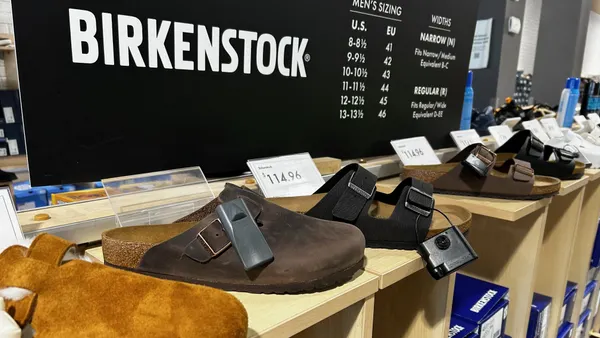Dive Brief:
- Sears has a bidder for its home services business in Service.com, a marketplace for contract and home improvement work, the retailer said in a press release. Service.com's $60 million bid would be subject to higher bids and set the baseline for a Chapter 11 auction, which Sears has asked a court to set for Dec. 13, according to court papers. Sears has also asked for a Nov. 15 hearing to consider the bidding process the company proposed.
- Sears Chairman and former CEO Eddie Lampert, also the company's majority shareholder, had previously expressed interest in buying the home improvement unit, along with the Kenmore appliance brand, from Sears.
- As Sears lines up bidders for key assets to sell in Chapter 11, Lampert is working with the retailer's lenders over a possible $450 million bankruptcy financing package to keep Sears solvent. According to a Sunday report from Reuters, Lampert is considering partnering with lenders on the financing package in exchange for "key collateral," including store leases, currently held by the Sears' banks.
Dive Insight:
So far, Sears' bankruptcy is largely a continuation of what the retailer for years has been doing outside of court: selling off key assets so as to keep afloat and meet debt obligations, while whittling down the company to an ever-shrinking list of core assets and operating pieces.
The home improvement service unit, specifically, Sears described as a nationwide leader, with 2,000 professionals and contractors working for it. The "vast majority" of its assets are separate from the retail business, Sears attorneys said in court papers.
By the time Sears is out of Chapter 11, if it makes it out of bankruptcy intact, it will likely be pared down to a group of 400 or so stores (that's the number highlighted by the company's chief financial officer as being more or less profitable).
The difference for Sears in the coming weeks and the past several years of out-of-court liquidation is the immediate threat of liquidation hanging over the company as it tries to win and maintain its debtor-in-possession (DIP) financing in bankruptcy.
Those loans are key to keeping the lights on and shelves stocked through the Chapter 11 process. The case of Toys R Us is a useful illustration for what can go wrong. When the toy retailer, which had planned initially to reorganize in bankruptcy, missed targets for the fourth quarter attached to its DIP loan, it defaulted on key covenants and spent months negotiating with its lenders to stay afloat before they pulled the plug and sent Toys R Us into liquidation.
This was all news to suppliers, who kept shipping on credit to Toys R Us while it faced liquidation and subsequently got hosed when the retailer moved to wind down. The vendor world might not be so quick to trust Sears, having seen how things turned out for Toys R Us suppliers (many of whom also sell to Sears, which sells toys as well).
As the Associated Press and others have reported, some Sears suppliers are "gun shy" in dealing with the bankrupt retailer. They're keeping credit and shipping terms tight or making the retailer pre-pay for orders.














